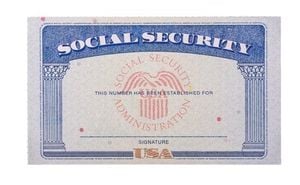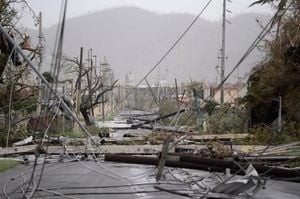As the fall semester began in August 2025, students at universities across the United States found themselves thrust into a climate of fear and confusion—not by real violence, but by a rash of hoax calls reporting active shooters on campus. These false alarms, known as “swatting” incidents, have swept at least a dozen campuses from Arkansas to Pennsylvania, sending students and faculty scrambling for safety and prompting massive law enforcement responses. The impact has been profound, raising questions about campus safety, emergency communication, and the psychological toll of living in an era shadowed by the threat of mass shootings.
On August 25, 2025, just after noon, students at the University of Arkansas received a RazALERT message warning of a possible active shooter on campus. As reported by KNWA/KFTA, students sheltered in place for more than an hour, huddling in classrooms and behind locked doors, until the all-clear was finally given. The University of Arkansas Police Department was inundated with 308 landline calls and 38 9-1-1 calls from seven different buildings, all reporting a shooter. Yet, as Assistant Chief Matt Mills later explained, there was no record of shots fired. "It’s looking as if this was another swatting or hoax call," Mills told the media, echoing a sentiment that would soon be repeated at campuses nationwide.
The University of Arkansas incident was far from isolated. According to The Independent, at least 10 college campuses—including Northern Arizona University, Iowa State, Kansas State, Colorado University, the University of New Hampshire, and Villanova University—received similar false alarms on August 25 alone. The very next day, the University of Kentucky was targeted, though authorities determined the call was a hoax before issuing an alert. In each case, the pattern was chillingly familiar: multiple calls to authorities, often with the sound of gunshots in the background, and urgent campus-wide texts instructing students and staff to “run, hide, fight.” Officers responded in force, but every time, the threat proved nonexistent.
The FBI has stepped in to investigate these swatting incidents, working with state and local law enforcement to track down the perpetrators. In a statement shared with NBC News, the FBI acknowledged, “The FBI continues to work with state and local partners to investigate the swatting hoaxes but cannot say at this stage whether or not the incidents are connected.” The agency has provided few details about the origins of the calls, and whether they are coordinated remains unclear. However, as The Independent noted, a similar wave of threats three years ago was believed to have originated outside the country.
The emotional toll of these hoaxes is hard to overstate. Students and staff, already accustomed to active shooter drills and lockdown procedures, found themselves living out their worst fears—even if only for a few minutes. Miceala Morano, a senior journalism major at the University of Arkansas, described her experience to The Independent: "As of right now, I’m safe. I love you," she told her grandmother while hiding behind a green screen in the broadcast room, officers outside in bulletproof vests. The fear, she said, was overwhelming: “There’s just these few minutes where all you really feel is fear, whether the threat’s there or not.”
Casey Mann, a 19-year-old classmate, echoed the sentiment, telling reporters she couldn’t sleep until 2 a.m. after the ordeal. “It’s just a scary reality the time we’re living in right now,” she said, her voice breaking. The emotional aftershocks can linger for days or even weeks, experts warn.
The initial wave of swatting calls began on August 21, 2025, in Pennsylvania, when law enforcement received multiple reports of shots fired on Villanova’s campus during an orientation Mass for new students. The calls claimed a man armed with an AR-15 style weapon was on campus, and gunfire could be heard in the background. The resulting lockdown lasted two hours, leaving chairs scattered and students hiding in utility closets. The school’s president, the Rev. Peter M. Donohue, denounced the “cruel hoax,” lamenting that what should have been a moment of welcome turned to panic and terror.
Other universities soon found themselves in similar situations. On August 24, Tennessee authorities responded to calls about an active shooter at the University of Tennessee at Chattanooga, with claims that four people had been shot. Again, it was a hoax. The University of South Carolina received two calls on August 25 and 26, reporting an active shooter at the library, complete with gunshot sounds. Students at USC described the chaos and confusion that followed, as multiple alerts were sent to their phones but details remained scarce. Mia Ochoa, a junior who had previously experienced a real lockdown during the Marjory Stoneman Douglas High School shooting in Florida, told WRDW/WAGT, “My family is devastated we had to go through this twice.”
Communication during these incidents has come under scrutiny. Some students and parents expressed frustration over the lack of clarity in alerts. Johnny Roman, a USC student, suggested, “I think they should’ve got confirmation before they sent out at least the second alert.” The university explained that law enforcement must sometimes act quickly, without waiting for confirmation, to protect lives. “If the threat had been legitimate, the cost of inaction or a slow or a weak response could have been devastating,” a USC spokesperson said.
Cybercrime experts, like Kevin Hendricks, have weighed in on the tactics of swatters. As reported by WRDW/WAGT, these criminals often use non-emergency numbers and voice-over Internet protocol to avoid detection, targeting specific entities rather than calling local 911 networks. Hendricks noted that such hoaxes are increasingly timed to coincide with move-in week or the first days of class, maximizing disruption and fear.
According to the Educator’s School Safety Network, the prevalence of false reports is on the rise. In the 2022-2023 school year, 63.8% of all violent incidents in schools were false active shooter reports, amounting to 446 hoaxes nationwide. The risk, experts warn, is not just immediate panic but also the potential for complacency. “It does make me worry that people will be inclined to think it’s a false alarm,” said Mya Norman, a chemistry instructor at Arkansas. “We live in tornado alley where people hear a tornado warning and go outside to look. So it does concern me that we could end up with that kind of an effect.”
Security consultants like Ken Trump emphasize the delicate balance universities must strike: remaining vigilant without fostering paranoia. “It's that delicate balance, not downplaying an active shooter because those things are occurring but also we don't want people to go to work paranoid and panicked every day,” Trump told The Independent.
As the investigation continues, the FBI and local authorities are working to trace the origins of the calls and prevent future incidents. For now, the legacy of this wave of swatting hoaxes is a campus community on edge, forced to navigate the uncertain line between caution and fear as they return to their studies.




